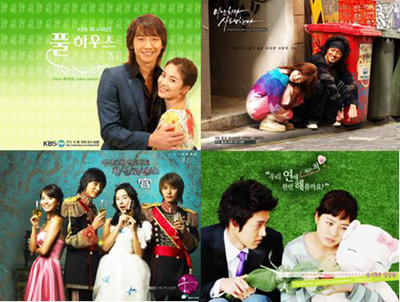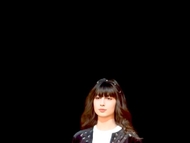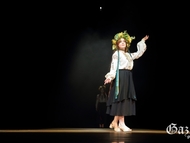
What do you think about first when you think of Korean dramas? They are very popular now. Seoul International Drama Awards opened in September. The aim of the Seoul International Drama Awards is to make a world drama festival. Since 2006, the Seoul International Drama Awards has been operating. These days, the popularity of Korean dramas is growing around the world. For example, Daejanggum (a historical drama) and Winter Sonata (a melodrama) have been part of the Korean wave.
Do you know when Korean dramas began? In the 1960s, after the establishment of KBS, TBC, and MBC, television dramas began to develop their format and contents. From 1970 to 1980, dramas displayed the emotions and struggles of daily life among everyday people. From 1980 to the 1990, after the arrival of color television, drama became bigger in scale and came to maturity. From 1990 onwards, dramas became very commercial and fiercely competitive, with three companies broadcasting. Dramas began to display the consumer society and have become increasingly popular as the years go by.
Nowadays, there are lots of genres of dramas. For example, there are dramas relating to medical science, history, sports, comics and so on. Daejanggum, a historical drama showing a successful woman’s biography from 500 years previously, and Winter Sonata, a melodrama, are both extremely popular in Japan. For these reasons, the spread of Korean culture has resulted in a rapid increase of culture tourism, which benefits industry and the economy, and the exporting of broadcasting, movies, and records.
Even though Korean dramas have played an important role in the Korean wave and have been well-recognized for their quality, they do have some weak points, too. On the positive side, we can see the intensive and rapid storylines and the realistic and neat lines. Furthermore, Korean dramas deal with subjects that mix eastern and western values, and the actor’s acting abilities and polished styles appeal to viewers, along with beautiful scenery or popular music. However, Korean dramas are always focused on merely maintaining a high viewing rate, and so they put some unrealistic scenes and tend to forget the first intention of their planning.
To stand alongside the best dramas of the world, Korean dramas should seek to develop their diversity and openness, and be more based on creativity with diversified world viewers. Next, they should ensure that they are always professional and try to offer various scenes and provide new and curious information. As dramas represent each country’s own culture, we need to learn from other countries dramas and try to make something new day by day with interesting and professional storylines and through establishing the professional foundation of photographing systems of the present dramas.








